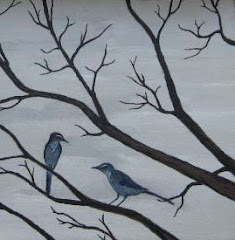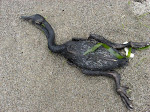
This weekend, Sarah and I traveled to the northeast corner of Oregon, a region of the state that we had not yet explored.

On Friday, we escaped the rain in Portland and arrived in drier Wallowa County.

Wallowa County borders Idaho and Washington, contains many cows, and has no traffic lights.

The Wallowa Mountains resemble the Rockies of Montana and contain the same plants and birds that are found in my home state.

We stayed in a nice bed and breakfast near the small town of Joesph, the bronze sculpture capital of Oregon.

On Saturday morning, we drove through ranchland and the Zumwalt Prairie Reserve in search of raptors. We had been looking forward to visiting Zumwalt Prairie and its famous density of hawks and eagles.

Unfortunately, the Belding's ground squirrels, a favorite meal of raptors, appeared to be hibernating, so we did not see the Golden Eagles or Ferruginous Hawks we hoped for.

We saw plenty of nice scenery, red-tailed hawks, and mountain bluebirds, however, so the drive was a success.
 The ornamental trees in the neighborhood are reaching their peak of brightness, as are the well-manicured lawns.
The ornamental trees in the neighborhood are reaching their peak of brightness, as are the well-manicured lawns. The dark, cool weather inspired me to carve a pumpkin in celebration of the season. This is the first home-grown Jack O' Lantern I've carved. I gave him acorn horns and a leafy beard to help him fit into the neighborhood. We have a smaller pumpkin in the apartment that we will bake into a pie next week.
The dark, cool weather inspired me to carve a pumpkin in celebration of the season. This is the first home-grown Jack O' Lantern I've carved. I gave him acorn horns and a leafy beard to help him fit into the neighborhood. We have a smaller pumpkin in the apartment that we will bake into a pie next week.







































